Ethinic Minorities
-

Tu ethnic group
The Tu ethnic minority, known for their simplicity and industriousness, lives in the northwestern part of China – to the east of Qinghai Lake and south of Qilian Mountain Range and along the banks of the Huangshui and Datong rivers. It is concentrated mainly in the Huzhu Tu Autonomous County in Qinghai Province, and also in the counties of Minhe and Datong. Others are scattered in Ledu, Menyuan and the Tianzhu Tibetan Autonomous County in Gansu Province.
-

Tajik ethnic group
Standing at China's west gate in the eastern part of the Pamirs on the "roof of the world" is the Taxkorgan Tajik Autonomous County in Xinjiang, a town built up since 1950s. It is the place where the ancient Tajik ethnic group has lived generation after generation. Most of the 41,028 Tajiks live in compact communities in Taxkorgan, and the rest are scattered over areas in southern Xinjiang, including Shache, Zepu, Yecheng and Pishan. The Tajiks in Taxkorgan live alongside Uygurs, Kirgizs, Xibes and Hans.
-
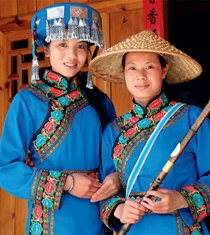
Shui ethnic group
There are in China 406,902 Shuis, the majority of whom dwell on the upper reaches of the Longjiang and Duliu rivers that meander across plains and rolling land interspersed with vast expanses of forests in southern Guizhou Province. They live in compact communities in the Sandu Shui Autonomous County and in Libo, Dushan and other counties. Some Shuis have their homes in the northwestern part of the Guangxi Zhuang Autonomous Region.
-

She ethnic group
The 709,592 Shes are scattered in hejiang, Jiangxi, Fujian and Guangdong provinces. They live in villages of several dozen households or live along with Hans. Most reside in hilly country 500 to 1,500 meters high. Rivers have carved out their valleys. The climate is mild and humid, the frost season brief, and the land fertile. Agricultural products abound: rice, sweet potatoes, wheat, rape, beans, tobacco and potatoes are just a few.
-
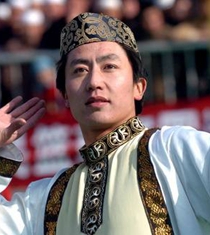
Salar ethnic group
There have been different theories put forward on the origin of the Salars. The prevalent view held at the moment is that the ancestors of the Salars came from the region of Samarkand in Central Asia during the Yuan Dynasty (1271-1368).
-

Russian ethnic group
The ethnic Russians in China live in Ili, Tacheng, Altay and Urumqi in the Xinjiang Uygur Autonomous Region and in the Inner Mongolia Autonomous Region.
-
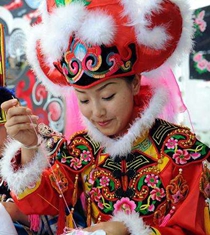
Qiang ethnic group
The Qiang ethnic minority has a population of 306,072 who mostly dwell in hilly areas, crisscrossed by rivers and streams, in the Maowen Qiang Autonomous Prefecture in Sichuan Province. A small number live with Tibetan, Han and Hui ethnic groups in such localities as Wenchuan, Dali, Heishui and Songpan.
-
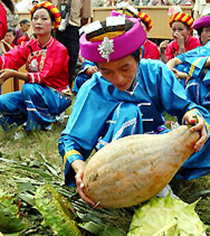
Gelo ethnic group
The 579,357 Gelos live in dispersed clusters of communities in about 20 counties in western Guizhou Province, four counties of the Wenshan Zhuang-Miao Autonomous Prefecture in southeastern Yunnan Province and the Longlin Multi-ethnic Autonomous County in Guangxi Zhuang Autonomous Region.
-
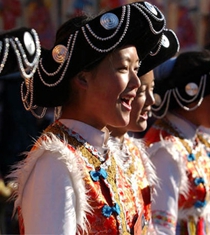
Pumi ethnic group
The 33,600 Pumis are concentrated in the Yunnan Province counties of Lanping, Lijiang, Weixi and Yongsheng, as well as in the Yi Autonomous County of Ninglang. Some live in Sichuan Province, in the Tibetan Autonomous County of Muli and Yanyuan County. They are on rugged mountains as high as 2,600 meters above sea level, cut by deep ravines.
-
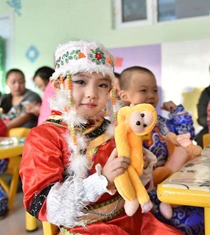
Oroqen ethnic group
People of the Oroqen ethnic group dwell in the forests of the Greater and Lesser Hinggan Mountains in northeast China which abound in deer and other wild beasts the Oroqens hunt with shot-guns and dogs. The Oroqens, who lived in a primitive communal society four and a half decades ago, have leap-frogged several historical stages to a socialist society in the years following the founding of the People's Republic in 1949.